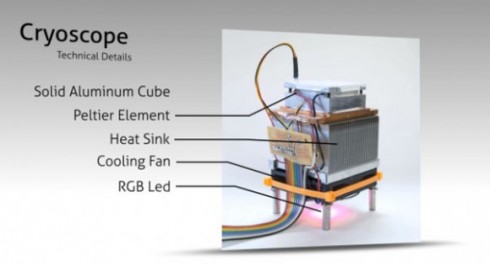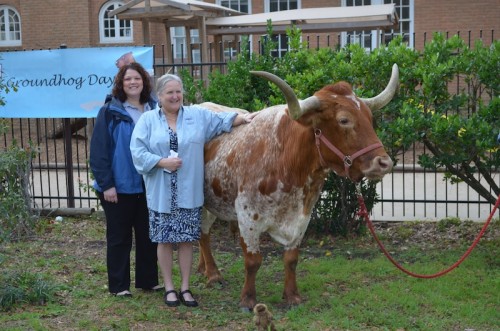In 2005 researchers from NCAR and the University of Colorado decided to change the weather community. They started a program called, “Weather and Society*Integrated Studies”, or WAS*IS. As the name implies, what “was” is no longer good enough. This unique program started with a workshop aimed to entice physical and social scientists to enter a room because of their separate agendas, yet emerge having formed unexpected alliances in solving common problems. The workshop quickly grew into a grassroots movement. That movement is now a revolution in progress, facing its greatest challenge so far.
WAS*IS encourages students, researchers, and practitioners in the weather community to see that they can make progress by taking interdisciplinary approaches. Organizers realized that meteorologists have burning questions that require social science methods, and social scientists often have questions that require physical science understanding. This required a fundamental shift in the way we approach the goals of the meteorological community. Julie Demuth of NCAR and her colleagues explained in the November 2007 BAMS,:
…the ultimate purpose of weather forecast information is to help users make informed decisions, yet much remains to be done to translate
weather forecast information to societal benefits and impacts. To work toward this goal, a closer connection
between meteorological research and societal needs is essential, because problems are not meteorological or societal alone.
This simple notion spread collaboration like a wildfire.
By the time of the BAMS article, some 80 people had become WAS*IS denizens, pursuing projects that fuse meteorological and societal expertise.Demuth et al. took the unusual step of listing every one of these participants and affiliations in their article. There was a method to the rolodex approach: as a grassroots endeavor, WAS*IS was looking to hook up likeminded people–to create a community within a community that would share ideas and identify holes in the knowledge. As anyone who has done interdisciplinary research will tell you, five years ago was still the dark ages for support for integrating social scientists in meteorological work. Acritical mass of demand needed to be created; the hope was that readers would see who was involved and get in touch, fueling more questions and more interdisciplinary projects and more clamoring for changes in funding and attitudes toward research and services.
Already, just five years later, the WAS*IS community numbers some 276 people, many of them just starting out careers, searching for ways to connect the physical sciences with the social sciences, undaunted by the funding landscape they’d inherited.
With no money to give out, the revolution could promise cameraderie. WAS*IS, says AMS Policy Director William Hooke, “was the portal, the gateway, to a transforming experience”:
You’d be encouraged to join other entry-level professionals who had participated in an intense one-week dialog bringing together meteorologists and social scientists, helping them bridge their respective disciplines, network, and start projects that they could (and would, and continue to) build on over years.
Sound good? It was. The couple of hundred people who participated never stop talking about it, sharing their experience and their hopes and aspirations with the likes of you and me. They’ve come from the ranks of weather service forecasters. From broadcast meteorologists. From research scientists. From economics. Psychology. Sociology. They’ve caught the fever.
And they’re still changing our community. They provided part of the interest in and some of the traction and juice behind the NOAA National Weather Service thrust toward a Weather-Ready Nation.
Now for the bump in the road part. Earlier this week Jeff Lazo, director of NCAR’s Societal Impacts Program, sent out disturbing news:
Due to the tough budget times and NOAA’s choices about the allocation of their funds, we regret to say that external funding of the Collaborative Program on the Societal and Economic Benefits of Weather Information (aka the Societal Impacts Program) has been discontinued.
We have thus discontinued or suspended non-research related activities including WAS*IS, the Societal Impacts Discussion Board, the Weather and Society Watch, the Extreme Weather Sourcebook, and other information resources. As such we will be “taking down” these webpages as we will not be able to maintain them.
The Societal Impacts Program Discussion Board will be reinvented very shortly as a community service supported by Rebecca Morss here at NCAR. Please look for a message from her in the next week or so as we hope that a new incarnation of the board comes back online.
Hooke writes that it “is a tremendous loss”, but points out that
Meteorologists and social scientists trying to spin up the Weather-Ready Nation must choose whether to be deflated by this news or soldier on. It won’t be easy. Ironically, the sense of shared community and common purpose fostered by WAS*IS gives all parties a fighting chance to succeed.
Indeed, the Weather Ready Nation concept pushed by NOAA right now could prove to be the break that the revolution was looking for. Now fringe ideas are central to the goals of the entire weather enterprise; people in the halls of government are reaching for insights from neglected fringes. The cause of WAS*IS may have left the streets to be taken up by the establishment itself.

